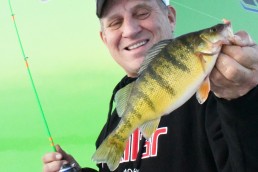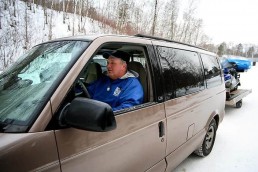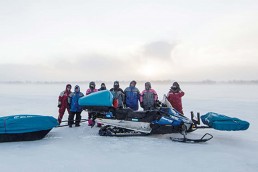Be a Better Ice Angler!
SHARE THIS POST
My buddy Artie Arndt and I recently had an interesting phone conversation regarding ice fishing. Artie owns a fish house rental business on Big Stone Lake on the Minnesota/South Dakota border, as well as the local bait shop. He is also the father of Tanner Arndt, one of the top open-water and winter fishing guides in that area of the Midwest.
Suffice it to say, Artie’s winters are dominated by ice fishing, and he knows a thing or two about what it takes to be successful day-in and day-out on the ice.
Artie started by noting that Big Stone Lake’s perch population is at an all-time high, but that doesn’t mean they’re necessarily always biting and easy to catch.
“Early season is still the best,” Arndt offered initially. “The fish haven’t been pressured, are hungry, and are usually pretty easy to catch.”
Arndt then went on to offer an interesting, but “makes sense” thought. “I’m not sure if I want to say the dumb fish get caught at early ice, but later in the year, we see more fish that come up to the bait, sometimes aggressively, but don’t hit it as quickly or as enthusiastically,” Arndt said. “When customers ask why, my response usually is something along the lines of, ‘The easy, aggressive or dumb ones having already been caught!’”
When I asked Artie how he and Tanner counter finicky fish, he offered two bits of advice. “We constantly stay on the move, looking for fresh fish,” he said. “When we have our houses on a hot bite, Tanner and our other guides are already scouting for the next school of unpressured fish, so that we can react quickly if a spot goes cold. If you come out here and are dead set on putting the house in one spot and leaving it there, you better get here early. The anglers who are most willing to move, and have houses that are easy to move, are usually the ones who end catching the most fish.”
Are you enjoying this post?
You can be among the first to get the latest info on where to go, what to use and how to use it!
“And, we and we really rely on small, finesse tungsten lures to get bit. Early-ice fish can often be caught on jigging spoons and minnows under bobbers, but a small tungsten (jig) tipped with a spike is often what it takes to get bites from the smart fish,” Artie continued.
Another interesting thought Artie offered revolved around time of day for the best perch bite. “That kind of changes. Sometimes, the bite peaks during the last hour of daylight. But often, the first two or three hours of the morning are best; it all depends on the day,” Arndt noted. “One thing we do find consistent is that sunny days usually see more active fish than cloudy days.”
Arndt’s thoughts are obviously geared toward perch, in particular, and Big Stone Lake. However, several of his ideas, particularly those about early ice, finding unpressured fish, and using finesse presentations, are applicable in other situations, too. In fact, regardless of the water you fish, or your favorite fish species, some of Artie’s ideas can probably help you catch more fish this winter.
For more information…
Arndt’s fish house rentals or guides, 320-839-2480; Big Stone Lake area, bigstonelake.com.
MWO
SHARE THIS POST
Did you enjoy this post?
You can be among the first to get the latest info on where to go, what to use and how to use it!
Mike Frisch
Mike Frisch is a lifelong angler who has been guiding anglers in western Minnesota for nearly three decades. Mike co-hosts the popular Fishing the Midwest television series and co-founded School of Fish, a leading fishing education program. Learn more by visiting fishingthemidwest.com or following “Fishing the Midwest” on Facebook.


